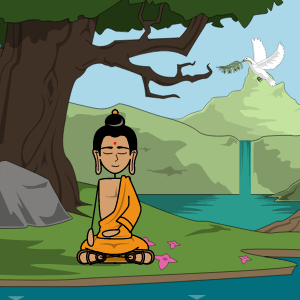Pasaules Reliģijas

Jūs varat atrast šo montāžas šādās rakstiem un resursi:

Budisms: Izcelsme un Vēsture
Autore Liane Hicks
Budismu praktizē vairāk nekā 500 miljoni cilvēku visā pasaulē, un tas ir ceturtā lielākā reliģija pasaulē. Budisms ir aptuveni 2500 gadus vecs un sākās 6. gadsimtā, pamatojoties uz Budas mācībām. Tā ir reliģija, kuras centrā ir miers un klusums, kā arī morālas un labas dzīves nozīme.

Kas ir Jūdaisms?
Autore Liane Hicks
Jūdaisms ir viena no vecākajām pastāvīgi praktizētajām reliģijām pasaulē, kas aizsākās pirms aptuveni 4000 gadiem. Mūsdienās jūdaismu praktizē aptuveni 15 miljoni cilvēku visā pasaulē. Šī senā reliģija bija pirmā, kas bija monoteistiska (ticēja vienam Dievam), un tā ir mūsdienu divu lielāko reliģiju – kristietības un islāma – sakne.

Sikhisms: Vēsture un Tradīcijas
Autore Liane Hicks
Sikhismu praktizē aptuveni 26 miljoni cilvēku, un tas ir piektā lielākā reliģija pasaulē. Vārds sikhs pandžabu valodā nozīmē Dieva māceklis. Sikhisma sekotājs pielūdz vienu Dievu un tiecas dzīvot mierīgu godīguma, labdarības, vienlīdzības un ticības dzīvi.

Kristietība: Vēsture un Tradīcijas
Autore Liane Hicks
Kristietību piekopj aptuveni 2,4 miljardi cilvēku visā pasaulē, padarot to par pasaulē lielāko reliģiju. Kristieši tic Jēzus Kristus dzīvei un mācībām, kuru viņi uzskata par Mesiju vai visas cilvēces glābēju. Jēzus mācības koncentrējās uz mīlestību, piedošanu, mieru un cerību.
'
Montāžas Apraksts
Studenti var izmantot diagrammu, lai salīdzinātu un kontrastētu dažādas galvenās pasaules reliģijas. Šajā tabulā ietilpst hinduisms, jūdaisms, budisms, kristietība, islāms un sikhisms. Tas norāda, kad reliģija sākās, kur atrodas tās sekotāji pasaulē, tās sekotāju populācija utt.
Montāžas Teksta
- Slidkalniņš: 1
- ~2000 B.C.E.
- Slidkalniņš: 2
- IndiaNepalMauritiusBali, Indonesia, the Caribbean, North America, South America, Europe, and worldwide.
- Slidkalniņš: 3
- ~ 1.16 billion~ 15% of World Population
- Slidkalniņš: 5
- Polytheistic: The Trimurti: Brahma, Vishnu and Shiva and incarnations of main gods that make up the one Supreme God, Brahman which is the ultimate reality .Pursuit of TruthDoing what is Morally Right and Good. Karma (Actions Affect your Next Life) Dharma (Do what is Just and Good) Reincarnation(Souls are born again after death)
- Slidkalniņš: 6
- ~2000 B.C.E.
- Slidkalniņš: 7
- IsraelNorth America, Middle East, North Africa, Europe, Latin America, Caribbean, and worldwide.
- Slidkalniņš: 10
- Monotheistic: Belief in One God.God's Covenant: Worshipping the one true God and following the Ten Commandments,Speaking the truth, Promoting peace andjustice,Charity and service to others,Importance of education
- Slidkalniņš: 11
- ~500 B.C.E.
- Slidkalniņš: 12
- China,Nepal, Thailand, Myanmar,India, Sri Lanka, Cambodia, Laos, Korea, Japan,and worldwide.
- Slidkalniņš: 13
- ~ 507 million ~ 7% of population
- Slidkalniņš: 15
- Buddha is the Enlightened One, a revered teacherThe Four Noble Truths:Everyone suffers, we are the cause of our suffering, we can end our suffering, following the Eightfold Path leads to an end of sufferingThe Eightfold Path: Right View, Right Intention, Right Speech, Right Action, Right Livelihood, Right Effort, Right Concentration, Right Mindfulness,Karma (Actions Affect your Next Life)Dharma (Do what is Just and Good) Reincarnation(Souls are born again after death)
- Slidkalniņš: 16
- ~0C.E.
- Slidkalniņš: 17
- North and South America, Europe, the Philippines, Sub-Saharan Africa, Oceania, and worldwide.
- Slidkalniņš: 18
- ~ 2.4 billion ~ 30% of population
- Slidkalniņš: 20
- Monotheistic: Belief in One God.The Holy Trinity: Belief in the Father, the Son and the Holy SpiritJesus is the Son of God, the Messiah through whom one can find salvationLove and Forgiveness,Asking Forgiveness from God for your Sins,Charity and service to others,Importance of education
- Slidkalniņš: 21
- ~622C.E.
- Slidkalniņš: 22
- Southwest Asia, North Africa,Southeast Asia, India, North and South America, China, Europe, and worldwide.
- Slidkalniņš: 23
- ~ 2 billion ~ 25% of population
- Slidkalniņš: 25
- Monotheistic: Belief in One God (Allah in Arabic).Muhammad was God's Final ProphetThe Quran is the Word of GodImportance of prayer, Promoting peace,justice, and equality,Charity and service to others,Importance of education
- Slidkalniņš: 26
- ~1500 C.E.
- Slidkalniņš: 27
- IndiaUnited StatesCanadaUnited Kingdom,and worldwide.
- Slidkalniņš: 28
- ~ 26 million ~ .3% of population
- Slidkalniņš: 29
- Guru Granth Sahib
- Slidkalniņš: 30
- Monotheistic: Belief in One God.Following the teachings of the 10 Sikh Gurus and the holy book, the Guru Granth SahibImportance of prayer, charity and serving othersPromoting peace,justice and equality for all,Duty to look after God's creations
- Slidkalniņš: 0
- ~14.7 million~ .2% of World Population
- World Religions
Izveidoti vairāk nekā 30 miljoni stāstu shēmu
Lai Izmēģinātu, nav Nepieciešama Lejupielāde, nav Kredītkartes un nav Nepieciešama Pieteikšanās!






